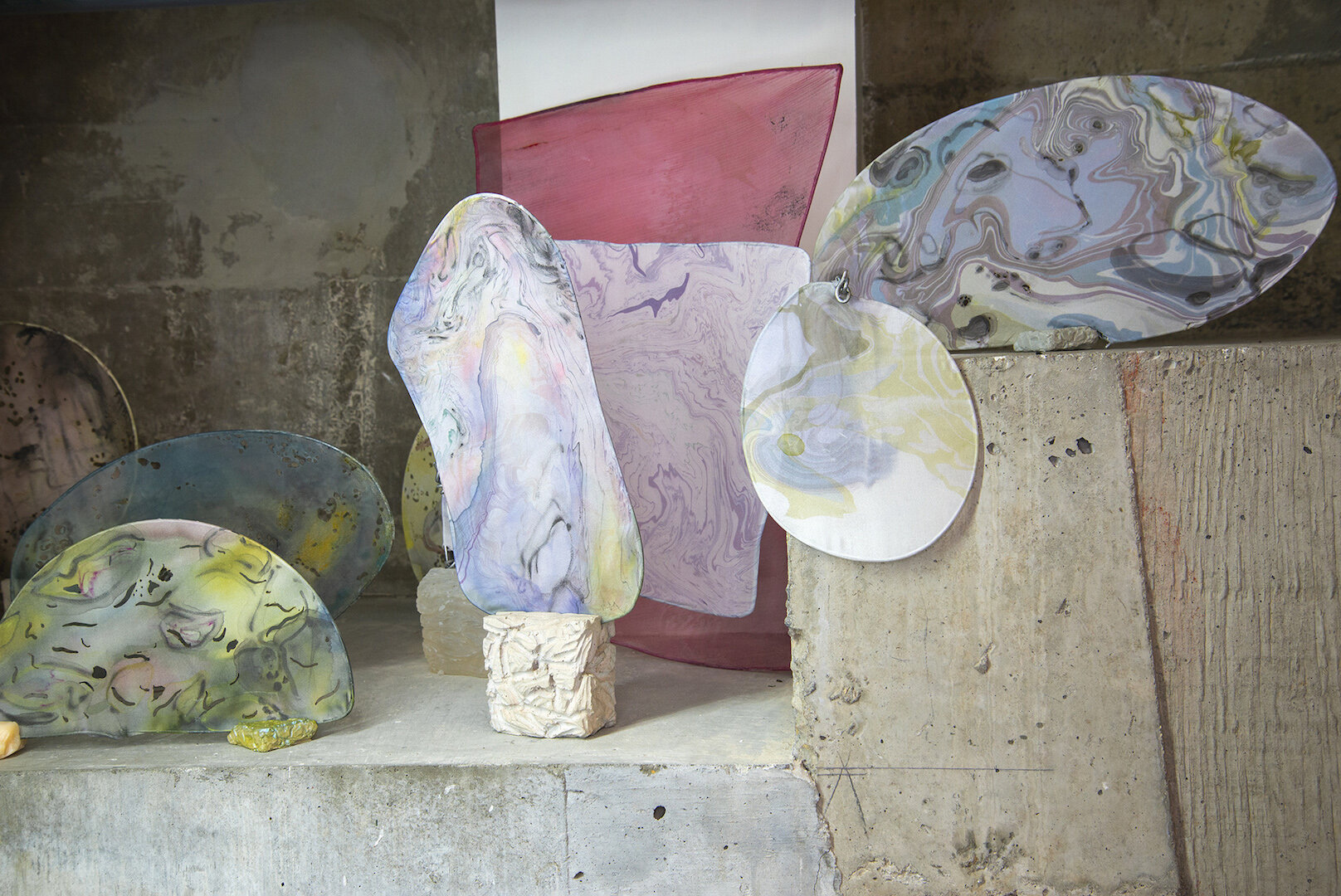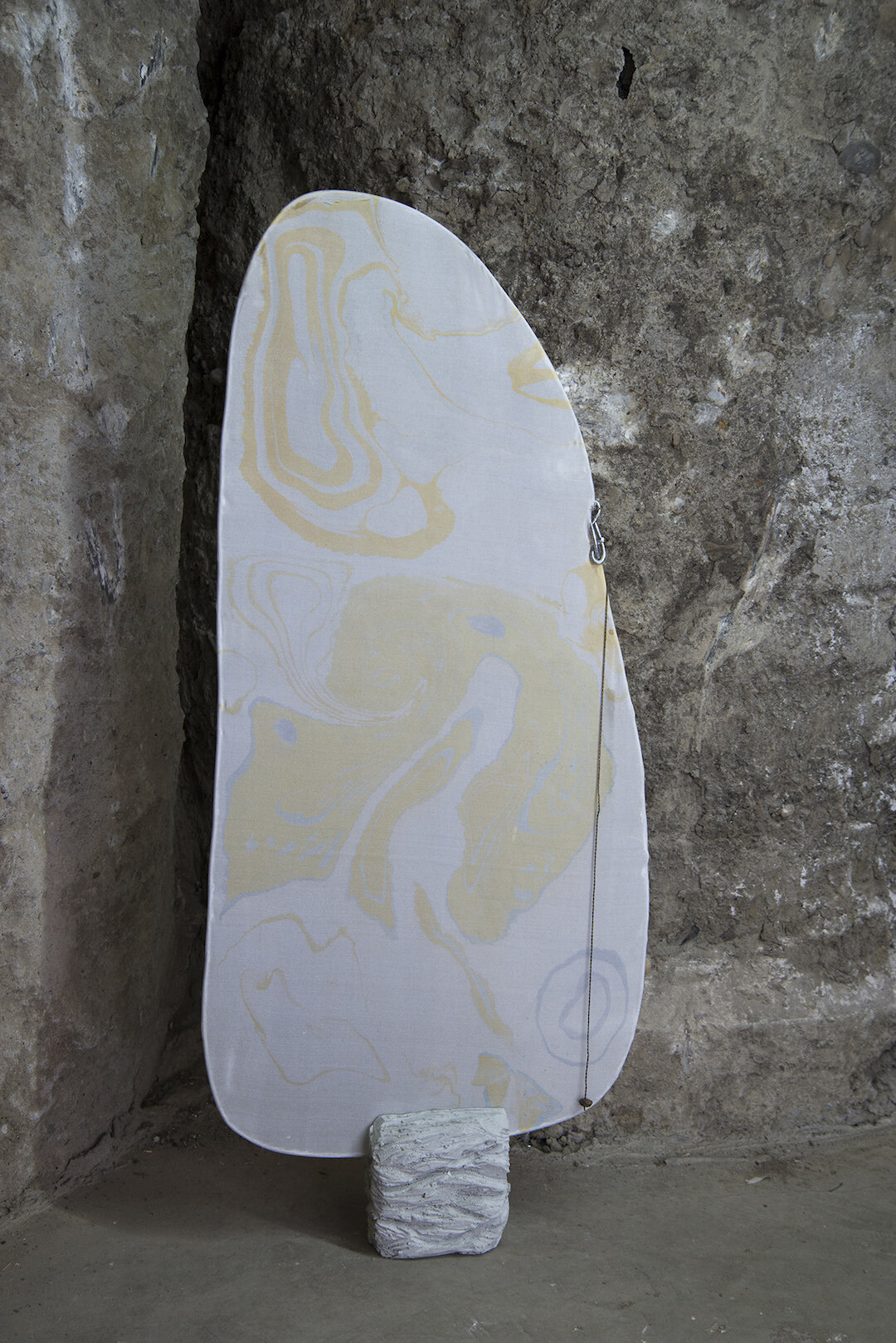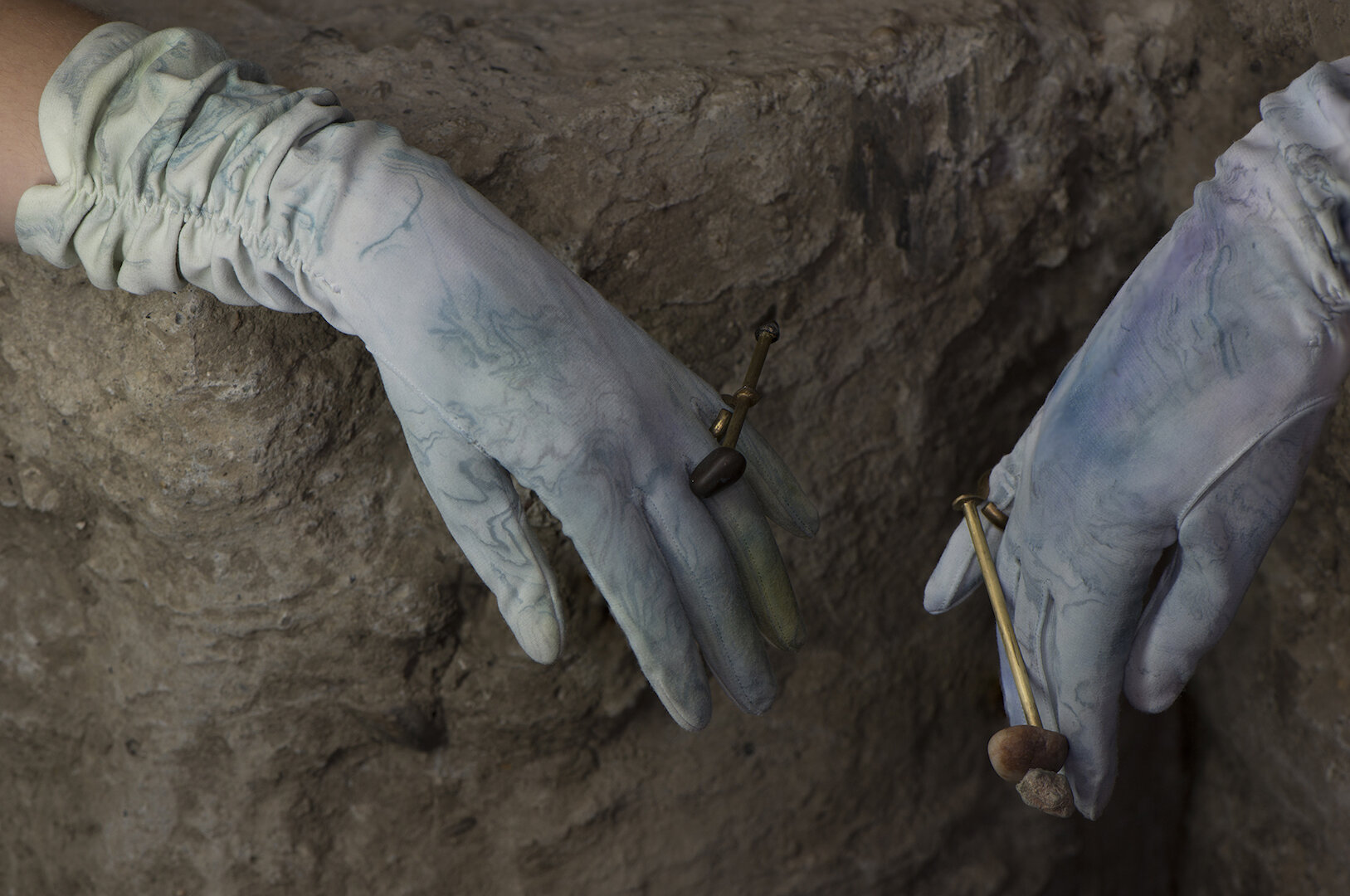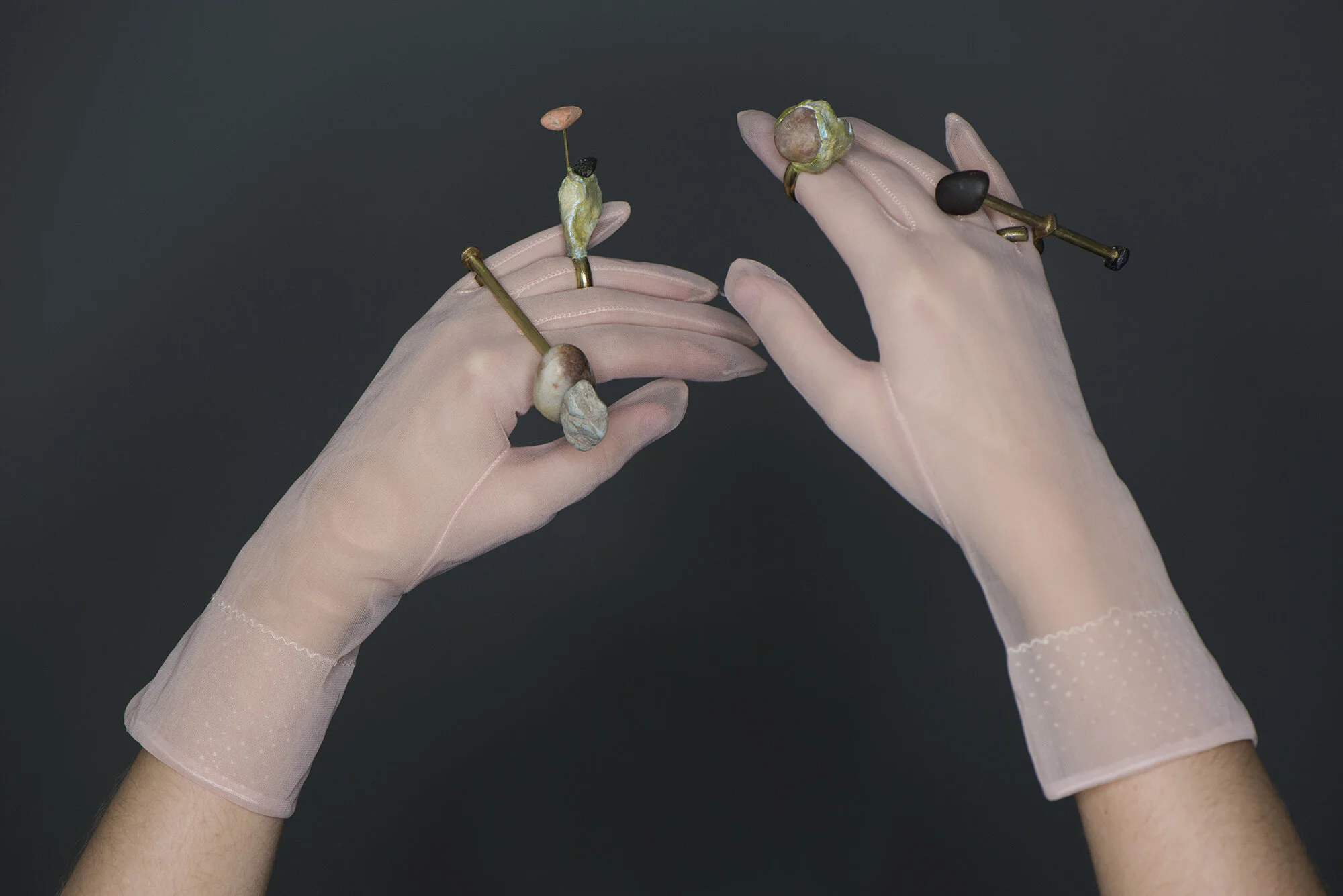“Secret Growing” Alma Louise Visscher and Taryn Kneteman
Somewhere Near the End of the World, 2020, Taryn Kneteman and Alma Louise Visscher .Silk fabric, handmade ink, charcoal ink, silk paint, graphite, marbling dye, galvanized steel, cast concrete, carved soap, found objects, incense.. Dimensions variable
“Secret Growing” - the title of Taryn Kneteman and myself’s most recent collaborative work - comes from a journal entry by the Swedish artist and mystic, Hilma af Klint:
"The phenomenon we are trying to explain is truly bewildering. What is this phenomenon, you ask? Well, beloved, it is that which we want to
call the secret growing. How often have we heard you say that everything is futile, that nothing comes of all your labours.
Yet like amorphous buds your endeavors sprout in all directions. You see everything as formless and you forget that this is a sign of life." - Hilma af Klint, September 16, 1903.
Our collaborative practice is an inquiry into the living, shifting, and changeable nature of shared resources and collective making, both with each other and with the public. Our collaborative and individual practices intertwine as flexible systems of creation. Alma brings a background in textiles, low-relief sculpture, and natural dyes and inks. Her work considers the complex ecologic and socio-political history of materials. Taryn is fascinated with surfaces and material transformation in everyday rituals and domestic spaces. She brings a background in printmaking, video, mold-making, and casting.
amiskwaciwâskahikan (Edmonton), where we make our work, has a two-century long colonial history of extractive enterprises focused on the river valley of kisiskâciwanisîpiy (the North Saskatchewan River). We may be accustomed to the river valley being a public park, but in the 1950s private residences were built on the banks of the river in the area currently known as Buena Vista Park. Yorath House is the only remaining private residence. It opened to the public as a city facility in Fall 2019, and we were the first artists in residence inhabiting the second-floor artist studio. We are sharing here two series of works created during our residency.
The first series is titled "Somewhere Near the End of the World.” Galvanized steel shapes stretched with silk are inspired by the forms of decorative window privacy screens which delimit the border between public and private spaces. Using marbling techniques, handmade inks, and silk dyes we painted abstract patterns on the shapes, which are supported by carved soap and concrete objects. Some of the pieces have hole patterns indexed from partially-eaten leaves collected from the tended flower areas surrounding Yorath House. We used incense to burn away the shadows cast by the hole patterns. The title takes its name from the series of concrete pillars - relics of Keillor Road that slumped into the river valley - visible across the river from Yorath House.
The second series called "Hand to carry" takes cues from infrastructure, monoliths, and land art, scaled down to be palm-sized. During our walks we collected small stones from the riverbank. We polished and incorporated them into sculptural rings created out of vintage brass curtain eyelets. While developing these pieces we looked at modernist jewelry of the 1950s and 60s, Atomic Age home décor, and undersea coral formations. The small stones and rocks are currently of no commercial value, but were gathered from the riverside site previously host to gold, then coal, then gravel extraction.
These sculptures adorn the present moment and - we hope - question the process of collecting, extracting, and valuing materials.
Hand to carry, 2020. Taryn Kneteman and Alma Louise Visscher .Vintage brass curtain eyelets, vintage gloves, stones, clay, and fabric ink. Dimensions variable.
“Signs of Life” is a reflection on this work by Taiessa as part of the Art from Here project. An excerpt is included below and the whole piece can be read here https://www.artfromhere.ca/writing-archive/taiessa
As I see it, these series stir questions of value and preservation, calling on the history of still life while asking us to inquire about the specific histories of the objects-turned-artworks before us. There is both a sense of transience and a deep grounding in the work. We see flowers in various states of the inevitable cycle of life and decay. The same hands that plucked them from the earth are adorned with stones from the river, resting on finger tips in a formation that evokes models of our solar system. While the flowers shrivel away, the stones bear the weathering of ages before. Diligent polishing reveals striations that tell of their histories, freezing the moment in time that they were gathered from the riverside. Worn delicately and staged for photographs in a similar manner to fine jewels, the use of these stones further complicates notions of value - if I didn’t know differently, I would expect that the images from Hand to carry came from a spread in a high-end fashion magazine that I wouldn’t know the name of. The work asks us to question authority: who decides, and how do they decide, that one stone is more precious than another? - Taiessa “Signs of Life”
Hand to carry, 2020. Taryn Kneteman and Alma Louise Visscher .Vintage brass curtain eyelets, vintage gloves, stones, clay, and fabric ink. Dimensions variable.
Secret Growing, 2020. Taryn Kneteman and Alma Louise Visscher Fieldstone niche, riverbank clay, stones, dried flowers. Dimensions variable

















